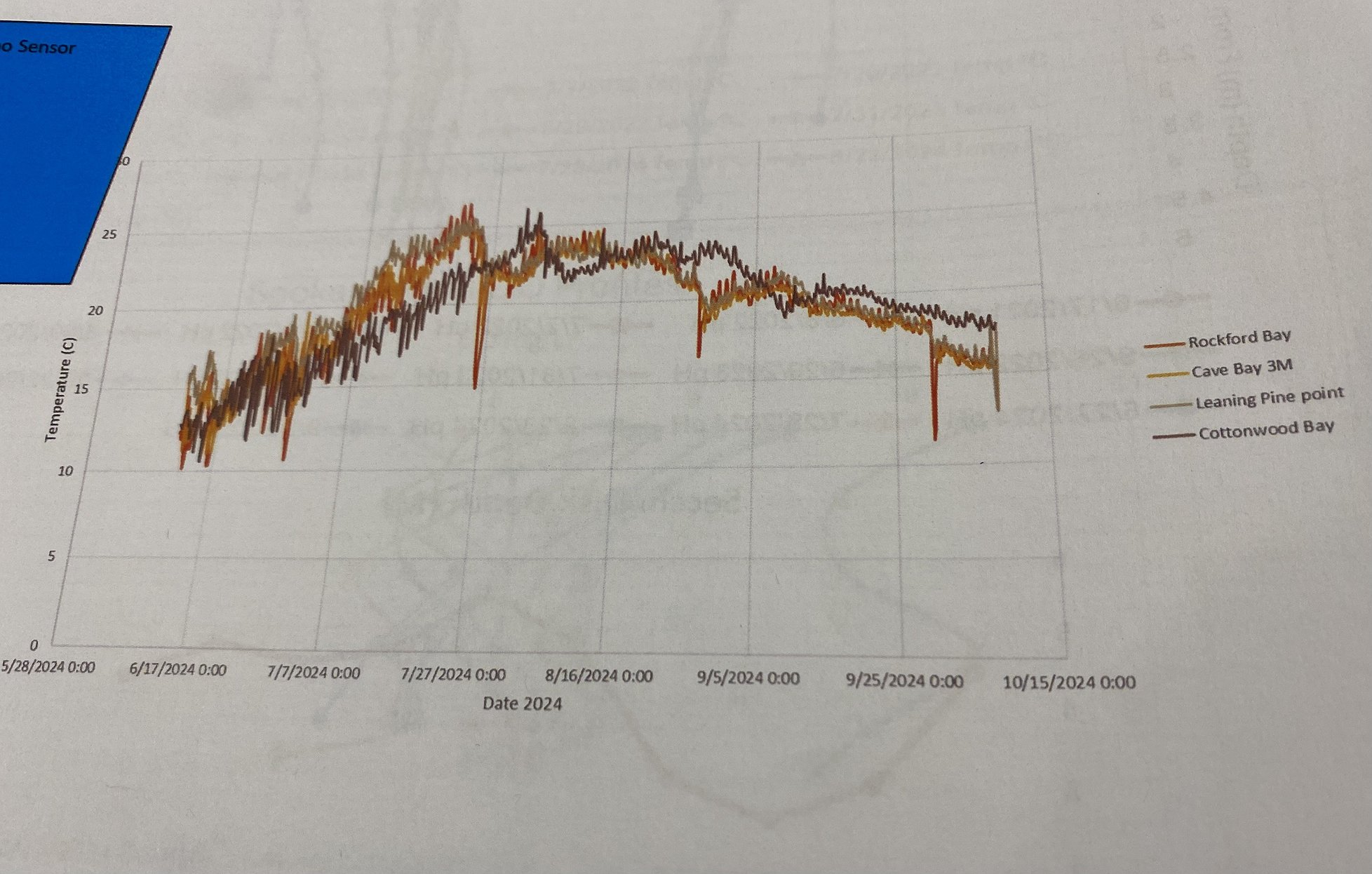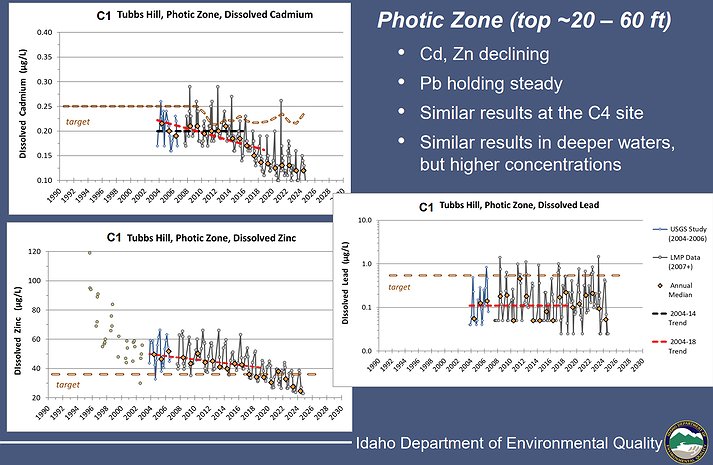Bay Watchers: Lake Coeur d'Alene is warming
COEUR d'ALENE — Water quality experts shared updates on Lake Coeur d'Alene monitoring efforts during the Bay Watchers annual meeting at Harbor Center Wednesday.
Meg Wolf of the Idaho Water Resources Research Institute and Craig Cooper of Idaho Department of Environmental Quality presented findings from 11 monitoring sites, including Arrow Point, Beauty Bay, Blue Creek Bay, Cave Bay, Everwell Bay, Leaning Pine Point, Moscow Bay and Steamboat Point.
"Temperatures are warming in the lake," Wolf said, citing data collected between May 28 and Oct. 15, 2024. Temperature measurements at four locations — Rockford Bay, Cave Bay, Leaning Pine Point and Cottonwood Bay — showed fluctuations between 10-20 degrees Celsius.
The warming trend could have ecological implications. Even a three-degree increase can alter lake conditions, potentially creating more favorable conditions for algae growth, according to Bay Watchers.
Cooper explained how metals interact with lake sediments using a housing analogy.
"Both low pH and low oxygen can change the house's structure and release metals from the sediments," he said. While bacteria naturally lower oxygen and pH levels, excessive bacterial decomposition can trigger concerning metal releases.
"The lake's bottom waters in summer are primed to release zinc and cadmium, which usually desorb between pH 6-7," Cooper said.
While DEQ monitors the northern portion of the lake and the Coeur d'Alene Tribe monitors sections of the St. Joe River.
Metals data shows encouraging trends: Cadmium and zinc levels are decreasing, though lead levels have remained steady, according to DEQ.
Looking ahead, DEQ plans to combine water sampling data with satellite imaging to provide more comprehensive and immediate monitoring capabilities.
The 2024 monitoring season marked the project's fifth year of extensive data collection.
 Temperatures are warming in Lake Coeur d'Alene, according to Bay Watchers data compiled between May 28 and Oct. 15, 2024, for Rockford Bay, Cave Bay, Leaning Pine Point and Cottonwood Bay. Warming even 3 degrees can change the ecology of a lake, including potentially creating better for algae to flourish. Eutrophication of the water can occur when the amount of nutrients increases too far and feeds invasive algae blooms.
Temperatures are warming in Lake Coeur d'Alene, according to Bay Watchers data compiled between May 28 and Oct. 15, 2024, for Rockford Bay, Cave Bay, Leaning Pine Point and Cottonwood Bay. Warming even 3 degrees can change the ecology of a lake, including potentially creating better for algae to flourish. Eutrophication of the water can occur when the amount of nutrients increases too far and feeds invasive algae blooms.



